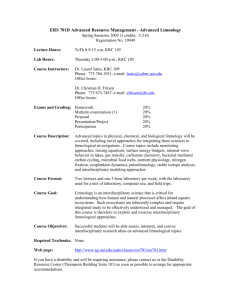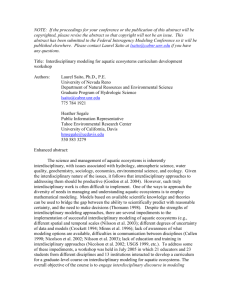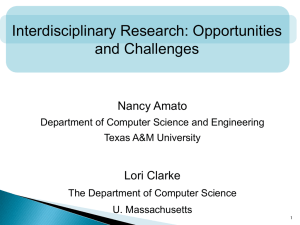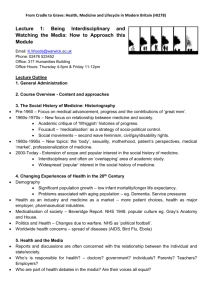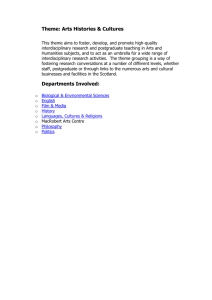Title: Stable carbon and nitrogen isotopes in the food web of the
advertisement
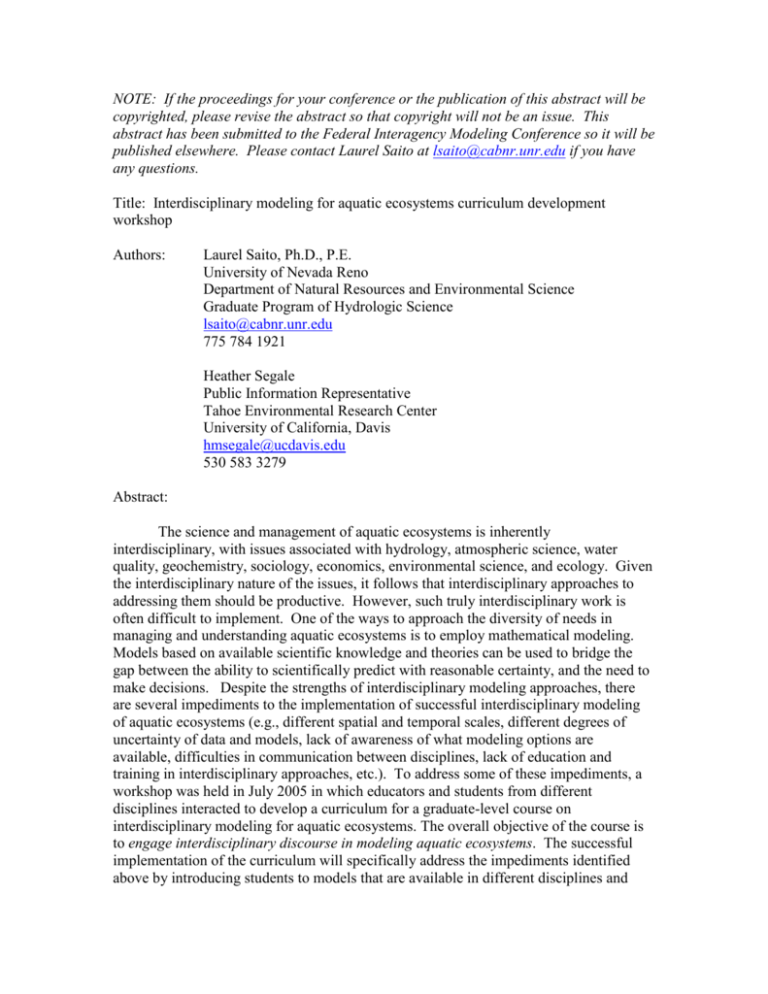
NOTE: If the proceedings for your conference or the publication of this abstract will be copyrighted, please revise the abstract so that copyright will not be an issue. This abstract has been submitted to the Federal Interagency Modeling Conference so it will be published elsewhere. Please contact Laurel Saito at lsaito@cabnr.unr.edu if you have any questions. Title: Interdisciplinary modeling for aquatic ecosystems curriculum development workshop Authors: Laurel Saito, Ph.D., P.E. University of Nevada Reno Department of Natural Resources and Environmental Science Graduate Program of Hydrologic Science lsaito@cabnr.unr.edu 775 784 1921 Heather Segale Public Information Representative Tahoe Environmental Research Center University of California, Davis hmsegale@ucdavis.edu 530 583 3279 Abstract: The science and management of aquatic ecosystems is inherently interdisciplinary, with issues associated with hydrology, atmospheric science, water quality, geochemistry, sociology, economics, environmental science, and ecology. Given the interdisciplinary nature of the issues, it follows that interdisciplinary approaches to addressing them should be productive. However, such truly interdisciplinary work is often difficult to implement. One of the ways to approach the diversity of needs in managing and understanding aquatic ecosystems is to employ mathematical modeling. Models based on available scientific knowledge and theories can be used to bridge the gap between the ability to scientifically predict with reasonable certainty, and the need to make decisions. Despite the strengths of interdisciplinary modeling approaches, there are several impediments to the implementation of successful interdisciplinary modeling of aquatic ecosystems (e.g., different spatial and temporal scales, different degrees of uncertainty of data and models, lack of awareness of what modeling options are available, difficulties in communication between disciplines, lack of education and training in interdisciplinary approaches, etc.). To address some of these impediments, a workshop was held in July 2005 in which educators and students from different disciplines interacted to develop a curriculum for a graduate-level course on interdisciplinary modeling for aquatic ecosystems. The overall objective of the course is to engage interdisciplinary discourse in modeling aquatic ecosystems. The successful implementation of the curriculum will specifically address the impediments identified above by introducing students to models that are available in different disciplines and how such models might be applied together to address aquatic ecosystem issues, addressing issues of variability and uncertainty in implementing interdisciplinary approaches, and giving students experience in working in interdisciplinary teams to apply interdisciplinary modeling approaches to increase knowledge about aquatic ecosystems. This presentation will summarize the key observations of the workshop and information about the curriculum.


